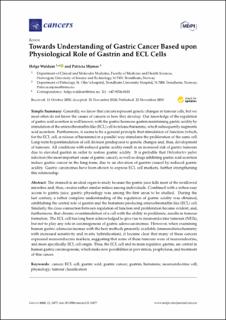| dc.description.abstract | The stomach is an ideal organ to study because the gastric juice kills most of the swallowed microbes and, thus, creates rather similar milieu among individuals. Combined with a rather easy access to gastric juice, gastric physiology was among the first areas to be studied. During the last century, a rather complete understanding of the regulation of gastric acidity was obtained, establishing the central role of gastrin and the histamine producing enterochromaffin-like (ECL) cell. Similarly, the close connection between regulation of function and proliferation became evident, and, furthermore, that chronic overstimulation of a cell with the ability to proliferate, results in tumour formation. The ECL cell has long been acknowledged to give rise to neuroendocrine tumours (NETs), but not to play any role in carcinogenesis of gastric adenocarcinomas. However, when examining human gastric adenocarcinomas with the best methods presently available (immunohistochemistry with increased sensitivity and in-situ hybridization), it became clear that many of these cancers expressed neuroendocrine markers, suggesting that some of these tumours were of neuroendocrine, and more specifically, ECL cell origin. Thus, the ECL cell and its main regulator, gastrin, are central in human gastric carcinogenesis, which make new possibilities in prevention, prophylaxis, and treatment of this cancer. | en_US |

